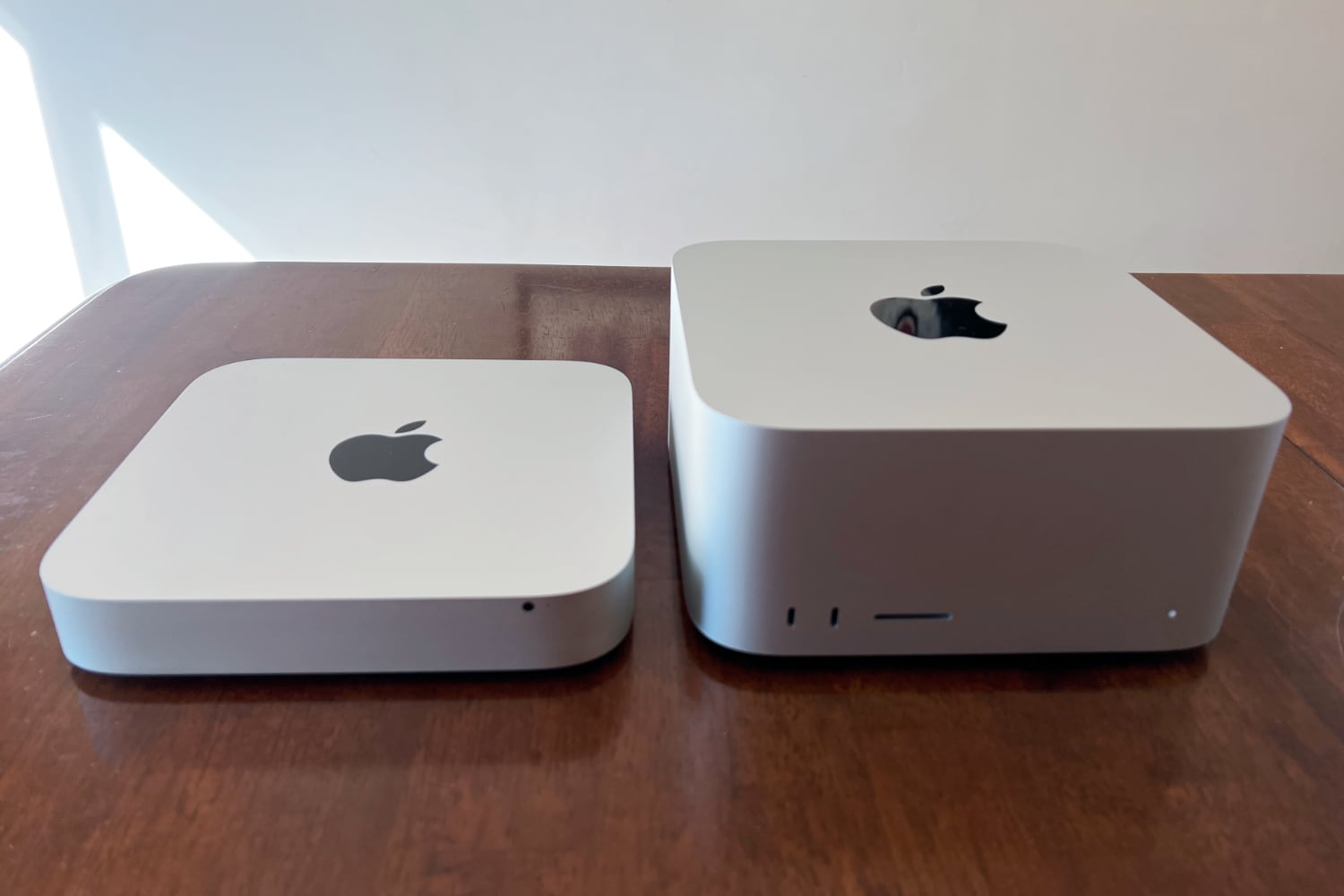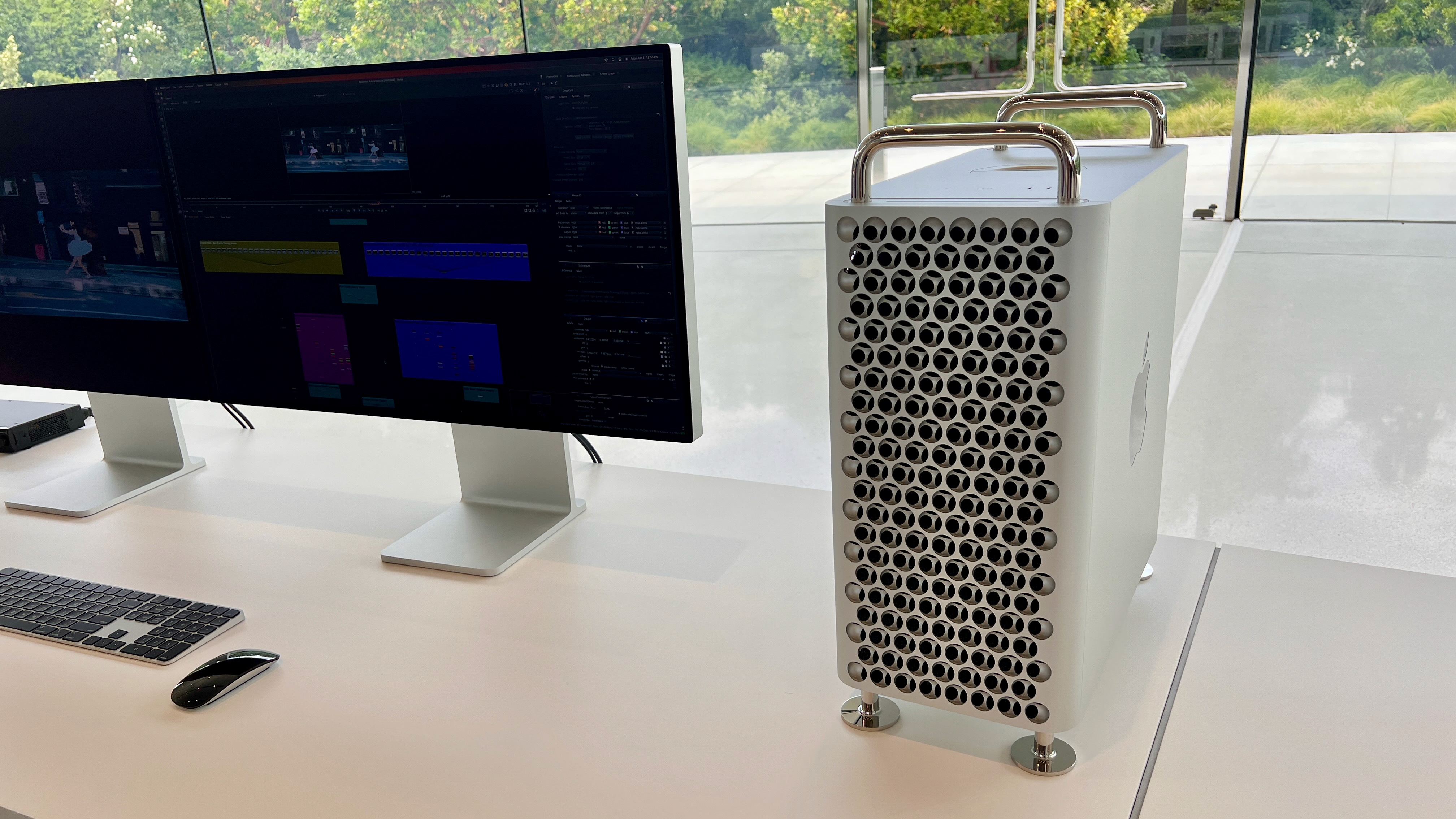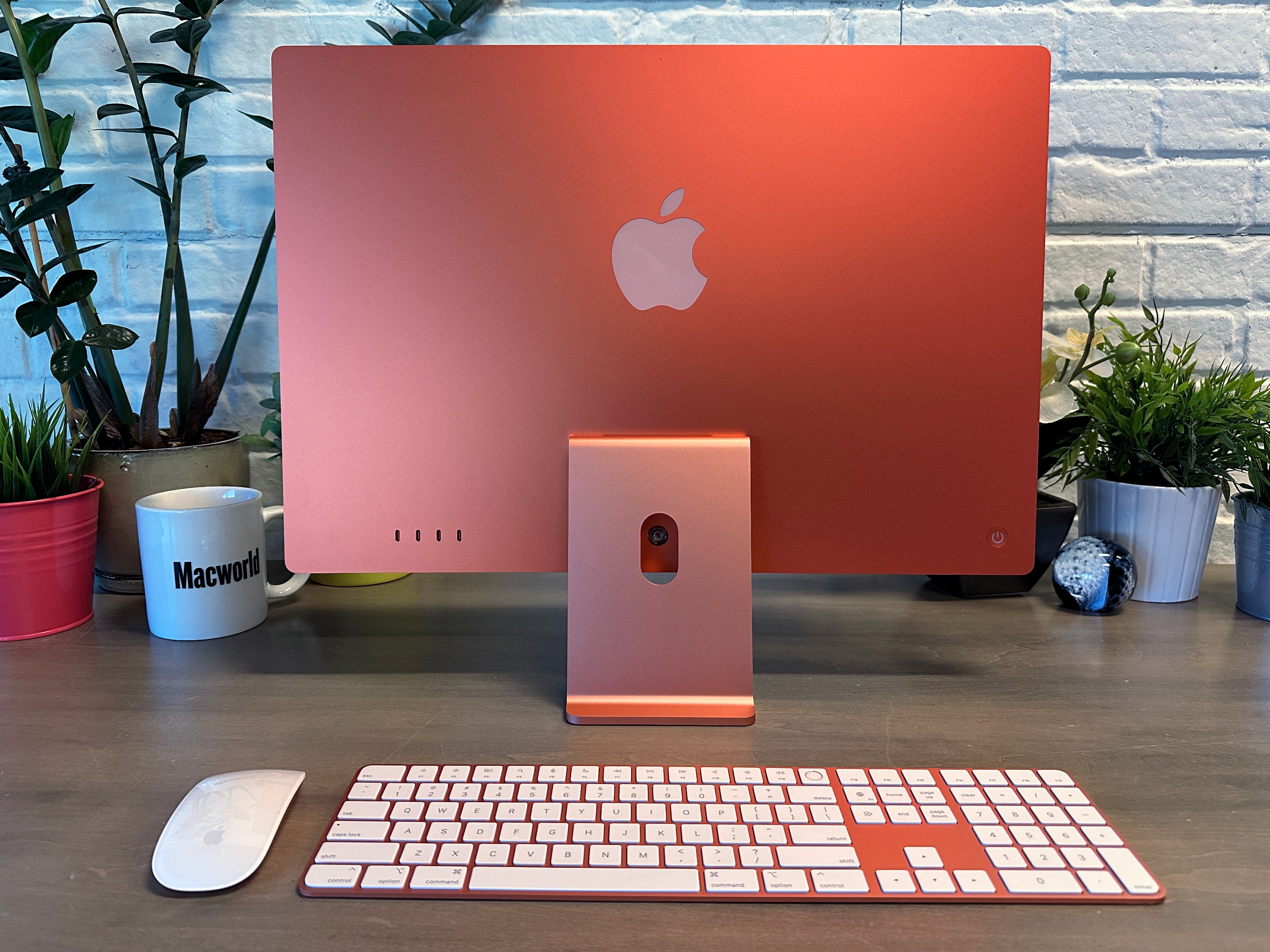With the release of the M3 MacBook Air about a month ago, Apple’s laptop lineup has come up to date, with each MacBook sporting a version of the M3 chip, the latest in Apple silicon. So now it should be time to move on to the other shoe: updates to the desktop Mac line.
But of the four models in Apple’s desktop Mac line, only one has an M3 chip, the iMac. This update arrived five months ago after a two-year wait, and we don’t even know if the rest of the lines will receive an update before the M4 arrives. So what’s going on with Apple’s desktop Macs? Only Apple knows for sure. But we can look at the state of the desktop Mac lineup based on each model and try to understand what Apple is thinking.
Mac-mini
The lack of an M3 update for the Mac mini is puzzling considering its past release history. When Apple introduced the M1, the Mac mini shared the spotlight with the first Apple Silicon machines. Then when the M2 Pro arrived, Apple added a high-end model with an M2 Pro chip as a lower-cost performance machine. Both times, the Mac mini was at the forefront of launching a new chip.

It seems fitting that Apple will update the Mac mini (left) and Mac Studio in 2024, but it’s not a certainty.
Roman Loyola/IDG
However, things have changed this year. Apple released the M3 and M3 Pro chips at the Scary Fast Mac event in October, so it would make sense for the M3 and M3 Pro Mac mini to follow. That hasn’t happened and there are no rumors that a new model is coming soon. Apple’s pre-Apple silicon update history with the Mac mini is sporadic at best, but there’s no longer an excuse to keep the Mac mini on an older chip unless Apple plans to skip a generation or two.
iMac
In case you missed it, Apple updated the iMac with an M3 chip (as well as Wi-Fi 6E and Bluetooth 5.3) last fall. It’s a nice upgrade over the M1 it replaced, but since Apple introduced its current design in 2021, it’s now in the incremental update phase where new iMacs will focus on the performance and not much else. Apple didn’t even introduce a new color like it did with the MacBook Air M2 and MacBook Pro M3.
This isn’t to downplay the importance of each iMac update going forward, but incremental chip updates are somewhat predictable. Also, it seems like Apple’s cadence with the iMac is to update it every other chip generation, which means we won’t get another iMac until the M5 chip, probably in 2026 or 2027.
Apple could launch the iMac line by releasing a larger professional model, but that doesn’t seem to be happening either. Apple has specifically stated that a 27-inch iMac is not in its plans (although rumors of a 32-inch iMac Pro have been floating around), but unless Apple is being coy, the 24-inch model is the one with which we are stuck for a while.
Many Mac users are hoping for an iMac Pro revival
s
the works.
Dominik Tomaszewski / Foundry
Mac Studio
Apple surprisingly unveiled the Mac Studio alongside the Studio DIsplay at an event in March 2022. It represented a fast desktop machine, more powerful than a Mac mini but less expandable than the Mac Pro with an extremely small footprint.
The Mac Studio received the M2 Max and M2 Ultra chips less than a year ago, so an update doesn’t seem overdue yet even though the higher-end MacBook Pro models already have an M3 Max. It’s conceivable that Apple could update this Mac at WWDC in June with a new chip, as we don’t expect Apple to redesign it for a while, if ever. But we also have the impression that a generation could pass us by without an update.

Given how Apple has handled Mac Pro upgrades in the past, it wouldn’t be surprising if the company doesn’t significantly update it for a long time.
Foundry
Mac Pro
Apple introduced the first Mac Pro in 2006 as an ultra-high-end machine and today it’s less relevant than ever. On the one hand, Mac Studio is thousands of dollars cheaper and just as fast. On the other hand, the main selling points (upgradeable graphics and memory) disappeared when the M2 Ultra model was announced last June. The only thing that separates the Mac Pro from the Mac Studio is design, a few extra ports, and expandable storage.
So the question remains: does anyone really care whether Apple upgrades the Mac Pro or not? The Mac Pro has always catered to a particular niche, so it doesn’t generate a large number of sales. This is also a group of users who don’t upgrade their Macs as often as Mac mini or iMac users.
Like Mac Studio, Apple could easily skip the M3 Ultra and wait for the M4 in 2025. It’s already taken years between updates: a full six years passed between Cylinder (2013) and Lattice Tower (2019) .
So what about the M4?
According to a recent report from Bloomberg’s Mark Gurman, the M4 could arrive before the end of 2024, just 12 months after the M3’s debut. He says the chip will have several variants, named Donan (M4), Brava (M4 Pro and Max), and Hidra (Mac Pro). Specifically, he says Apple is “looking to beef up” the Mac Pro with support for 512 GB of memory, a massive increase over the current 192 GB limit, but still well below the maximum of 1. 5 TB of the previous model.
Gurman doesn’t mention any performance or efficiency improvements, but we can assume the usual 20 percent. More importantly, the new family of chips will be AI-focused to help run software features expected to arrive at WWDC as part of macOS 15. That likely means a major improvement to the Neural Engine, which has arrived on Mac with the M1 chip.
AI is the latest buzzword in technology, but it appears to be here to stay. And this whole algorithm requires a ton of CPU power. Apple silicon has a huge advantage here due to its incredible efficiency and Apple’s desktops could see a new life as AI infrastructure machines, particularly the Mac Studio and Mac Pro. But that could leave an even bigger hole in the mainstream desktop lineup as Apple focuses on the ultra high-end.
Is there any hope for the office?
If Apple launches new desktop Macs in 2024, the Mac mini and Mac Studio are the most likely candidates, but even these minor updates don’t seem safe. We know that Apple will update the MacBook Air and Pro with a new chip every generation, and that a new iPhone and Apple Watch will arrive every year, but desktop Macs are much less certain.
With Apple silicon, desktop Macs should keep pace with Apple’s laptops, but it’s clear that desktop Macs have taken a back seat. Granted, Apple probably doesn’t need to update them as frequently as MacBooks, but a longer cadence should at least bring a little more innovation. We waited more than two years for the smallest of iMac updates, and the long-awaited Mac Pro with Apple silicon stripped features compared to the Intel model it replaced.
Apple didn’t even change the design of the Mac mini or Mac Pro when they got their Apple Silicon upgrades. There had been rumors of a smaller Mac Pro and a thinner mini with new colors, but instead we got the same old cases that Apple has been selling for years. Even the iMac, whose design has been extensively overhauled with Apple silicon, is more derivative than new and lacks the wild creativity it once had. And we’re willing to bet it won’t be much different in a decade, if it even exists.

The iMac is nice, but the new design could have been so much more.
Foundry
Then there is the price confusion. A Mac mini maxed out to match the storage and RAM of the Mac Studio ends up costing the same even though the Studio has a better processor. The Mac Pro with the same M2 Ultra chip, memory, and storage as the Mac Studio costs $3,000 more for a few more USB-C ports and a larger case. And the Mac Pro doesn’t offer any higher-end processor options than those offered by the Mac Studio, despite persistent rumors of an “Extreme” chip.
While the M3 MacBooks offer a clear mix of features and options, Apple seems to sell a variety of desktop Macs because it has to, not because it has carefully studied consumer needs. Apple doesn’t sell a MacBook Air with an M3 Pro chip, but the Mac mini offers a very expensive M2 Pro option. The Mac Studio is great, but neither it nor the Mac Pro are useless. And Apple refuses to give iMac buyers what they really need: a bigger screen.
Desktop Macs take a back seat to the MacBook line because laptop sales dominate the market and people generally don’t upgrade desktop Macs as frequently. It appears that Apple has determined that the seat is now further back than before. You need look no further than the Vision Pro with Mac Virtual Display: soon your entire Mac will be housed in a headset with a 100-foot virtual monitor and you’ll no longer need a 1,599 Studio Display $ plugged into your $1,999 Mac Studio. That’s great, but the same innovation is expected to come to Apple’s desktop Macs.
For Apple fans who like to see the company’s high-end desktop Macs feature the latest and greatest technology, this is disappointing. Apple’s current desktop lineup offers excellent designs and features, even though it’s mostly made up of relatively dated M2 chips, but when you see that, for example, the M2 Max offers the same processor performance as ‘an M3 Pro, this makes customers hesitate to do so. buying a Mac mini or even a Mac Studio and inevitably pushing them towards MacBooks, where value and choice are much greater.
Apple still makes desktop Macs, but the wait for updates is longer and more uncertain than ever. And with very little on the horizon, it’s only a matter of time before they’re gone forever.
Table of Contents



